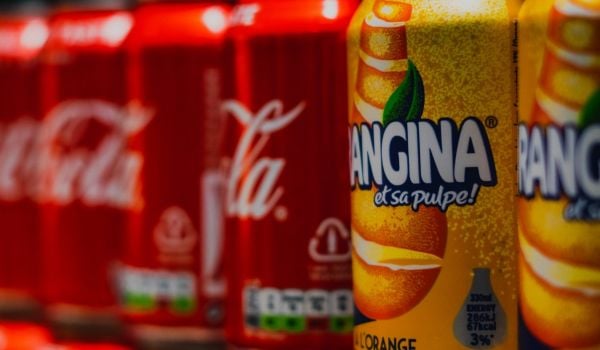Mim Shafer, head of the health department at Mission High School in San Francisco, and a teacher of three health classes, was disappointed with the school district’s drug-prevention curriculum. She felt it was stuck in a “Just Say No” model from the 1980’s, failed to acknowledge the differences between types of drugs, and didn’t prepare teenagers for real life scenarios in which drug use occurs.
“We teach a really radical sexual health curriculum, we have this awesome, body-positive way we teach nutrition,” she says. “How come it’s in a district where we’re accessing all this radical, engaging curriculum that our drug and alcohol unit is like, please just don’t do this?”
In 2019, Shafer was asked if she wanted to volunteer her class for an experimental curriculum — one that went beyond prevention and taught teens how to minimize the harm of drug use, including recognizing an overdose and administering naloxone. She jumped at the chance.
Two years since the pilot ended, Shafer is still teaching the curriculum and says her students find it more engaging. “It’s very conversation-based, and I think there’s a lot of very cool ways that students get to sort of follow other interests,” she says, including student projects looking at the war on drugs, looking at state-by-state zero tolerance laws and exploring drug myths.
Beginning in 2019, five schools in the San Francisco Unified School District became among the first in the nation to adopt a drug curriculum for teenagers based on the principle of harm reduction. The 15-lesson curriculum, “Safety First: Real Drug Education For Teens,” was published by the non-profit Drug Policy Alliance and, after incorporating feedback from the 2019 SFUSD pilot, was published for free on its website.
The curriculum was designed as an antidote to abstinence-based and preventive curricula popularized in the 1980’s and which still proliferate. Rather than “just saying no,” Safety First focuses on the history of drug policy, the physical and social effects of different drugs on the brain, and potential consequences for use, covering alcohol, illicit and prescription drugs, as well as casually used drugs like caffeine. It also teaches kids how to independently research drugs.
While the curriculum advises teenagers that abstinence from drugs is the safest approach, it advises students on minimizing potential negative effects. It also provides historical background about the war on drugs and its disparate impact on mostly poor Black and Latino communities.
The designer of the curriculum, Marsha Rosenbaum, is a long-time executive at Drug Policy Alliance, and lessons extend on the themes of her widely read 1998 op-ed in the San Francisco Chronicle, written as a letter to her son upon entering high school. In the letter Rosenbaum tells her son that rather than trying to scare him into not using drugs she would, “tell you a little about what I have learned, hoping this will lead you to make wise choices.”
She began developing “Safety First” into a full classroom lesson plan in 2016. DPA piloted the curriculum in a single classroom at Bard High School in New York in 2018 and in Spring of 2019 it was piloted at five schools in SFUSD.
Sasha Simon, who has overseen the Safety First curriculum since 2017 and now works for DPA as a consultant, says that SFUSD was chosen because the school already has a less punitive drug policy, directing students to outside resources instead of penalizing them for drug use. The five schools Simon and DPA chose for the pilot were also chosen for their racial diversity and because many students were low-income, in contrast to the student body of their first successful pilot at Bard High School, whose students are whiter and more affluent.
Simon says the district was taking a financial risk by opting into Safety First; In California, it’s easier for schools to adopt drug curricula with an abstinence or prevention-centered approach, because the programs are eligible for state grants. Through the state’s Tobacco Use Prevention Education program, California’s county offices of education received $5.4 million of grants for preventive tobacco and drug curricula in the 2019-2020 school year. Simon says that while SFUSD’s prior curriculum was eligible for this funding, Safety First is not.
Cheryl Nelson, a teacher on special assignment in SFUSD who was a liaison between Drug Policy Alliance and the district, says she spoke to many teachers who were frustrated with the district’s previous drug curriculum. (Nelson added she was not speaking as a representative of the school district but rather speaking to her personal experience with drug eduation curricula.)
“Teachers would say to me, I’m lying to the students, so much of the drug curriculum asks teachers to stand there and not implement best practices,” she says. “It felt not true, judgmental, archaic,” she says of the curriculum.
Steven Sussbaum, a researcher who was the creator of SFUSD’s previous drug curriculum, “Towards No Drug Abuse,” or TND for short, defended the curriculum to Next City, saying it had shown preventive effects for hard drug use in 7 of 7 randomized controlled trials between the years 1992-2012. He says that the program has remained timely because the effects are replicated over a long period of time.
“We do revise the TND curriculum slightly to keep up with the times, either regarding information on our website or in the manual to the extent that we maintain the evidence-base,” Sussbaum wrote in an e-mail.
While searching for funding to write a new drug curriculum, Nelson was put in touch with Rosenbaum at DPA, who was developing the Safety First lesson plan. Nelson offered feedback, and DPA eventually asked her about piloting the program in SFUSD schools.
Erin Hiltbrand Hall was one of the teachers Nelson reached out to about teaching Safety First in 2019. She teaches at Balboa High School, where the student body is about 50 percent Asian-American, 30 percent Latinx and over 60 percent qualify for free or reduced lunch, a program for low-income households. “It was always kind of difficult to find something that was relevant to students that didn’t contribute to stigma,” she says.
(Sussbaum, who developed the TND curriculum, told Next City he is “not blind to addiction stigma concerns,” and sent a study he authored this year on addiction stigma.)
Hall says Safety First was more relevant to her students than the old curriculum. “We’re certainly not encouraging teenagers to use drugs, but there’s the reality that people are curious and they try and do things for a number of reasons,” Hall says. “If we can provide teenagers with factual information where they can make the best decision for them and their body, I think that’s fantastic.”
Shafer, at Mission High School, says the students have wildly different reactions to the curriculum. Her students are 90 percent students of color, about 50 percent of whom are Latinx, and 80 percent are eligible for free and reduced lunch.
“Thirty 14 year olds have very different life experiences and very different levels of familiarity,” she says of a typical class. “There’s definitely kids who talk about narcan, talk about fentanyl right away,” Shafer says. “There’s kids who are like, ‘drugs are bad so I’m just not going to use them.’” She says the students would also integrate pop culture into the conversations, like the year the students related the lessons back to the Netflix show 13 Reasons Why.
While abstinence-based and preventive approaches are still the norm in high schools, even the dominant drug prevention campaign of the 1980’s has had to shift focus to a less rigid approach after studies showed it was not successful at prevention. Drug Abuse Resistance Education, or D.A.R.E, a once ubiquitous program from the era that partnered with police departments, recently adopted a new curriculum, still aimed at preventing drug use, although it is now more interactive than before.
D.A.R.E. opposes marijuana legalization, and classes are still led by police officers, despite criticism that this approach is inappropriate in schools where teenagers have had negative experiences with the criminal justice system.
In an e-mail, Ashley Frazier, Director of Curriculum at D.A.R.E., disputed the characterization of the program by DPA, saying it “is not an abstinence program, and does not require or suggest the pledging of any oaths, to police officers or anyone else,” a reference to a claim made on DPA’s website.
To claims that D.A.R.E. is out of touch, Frazier says, “what seems out of touch is the idea that all kids experiment with drugs, which is not borne out by any large sample data. Most kids don’t use drugs.” She says that most D.A.R.E. participants are fifth graders, and “It just isn’t a great audience for harm reduction efforts. Those are better aimed at population (sic) who are experiencing or at high risk of experiencing substance use disorder.” A request for data on how many D.A.R.E. participants are teenagers was not returned, but there are lesson plans on the D.A.R.E. website for middle school and high school students.
Frazier says that rather than abstinence, D.A.R.E. is now aimed at, “learning to assess their context, identify potential risk, weigh the potential for negative consequences, and make decisions that align with the future they want.”
But Simon says many health curricula have changed their branding yet still aren’t thinking past prevention. “Most health education policies are written with abstinence in mind, or minimally with prevention in mind, or preventing at all costs,” she says. “Even if that’s not what’s directly stated, that is absolutely the goal.”
Simon says that the focus on decision-making that D.A.R.E. has recently adopted is limited, as the only decision students are prepared for is to say no. “If you’re looking for a million ways to say no, what happens when they say yes?” Simon asks.
Safety First doesn’t use prevention as a metric. Instead, it focuses instead on drug knowledge and critical thinking, and says an evaluation showed students’ media literacy had improved; teens were less likely to believe that only one online resource was enough to understand the use of a drug, Simon says.
Shafer says the focus on research skills is one of the salient points of Safety First. “They know to vet articles when they find them,” she says. Shafer’s students also have a personal connection to the material, as Marsha Rosenbaum’s now adult son, Johnny, leads a surf club at the high school. Rosenbaum made a visit to the school to talk more about the letter she wrote to her son twenty years ago.
And Shafer says she hasn’t gotten pushback from parents. “I haven’t heard much from parents other than the standard, I’m so glad you’re talking to them about this,” she says.

Roshan Abraham is Next City's housing correspondent and a former Equitable Cities fellow. He is based in Queens. Follow him on Twitter at @roshantone.
















